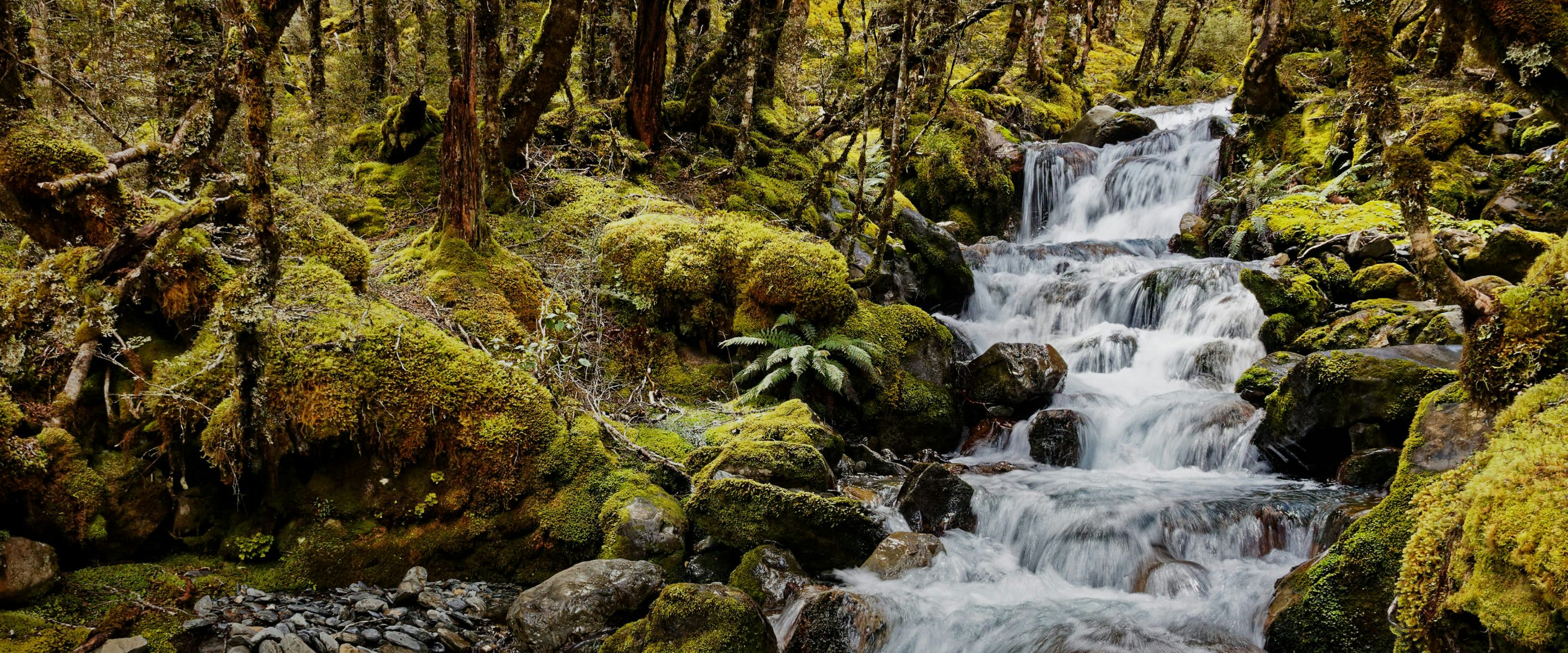
Mihi:
Welcome
- Mihi: Welcome
- Introduction
- Strategy Framework
- The Strategy
- Our Vision
- Our Values
- Our Future
- Wellbeing Framework
- Outcomes and Actions
- Te Taiao - The Natural World
- Pūtea - Economy
- Te Tauihutanga - Identity
- Tangata - People & Communities
- Te Rākau Taumatua - Place
- Papa Whenua - Infrastructure
- Rangatiratanga - Leadership
- Mātauranga - Knowledge
- The Tools We Need
- Ngā Kaiāwhina - Our Enablers
- Our Next Steps
E rere rā te reo pōwhiri ki ngā tai e ngunguru nei. Ngā tōpito o Te Pitau Whakarei-ā-Maui Tikitiki, e kiia nei, ko Te Tauihu, mihi mai, mihi mai rā.
Moe mai rā te hunga wairua i te ao o te pō, moe mai, moe mai rā.
E te tini, e te mano, ngā hāpori o te Tauihu i huri noa, tēnā koutou, tēnā koutou, tēnā koutou katoa.
I often reflect about how we came to be here in Te Tauihu. The journey that all of our ancestors went on to come here through a series of hekenga (migrations) over time. They were strong, courageous and resilient people. They had to thrive in a place that was new to them and make decisions to ensure the future wellbeing of their uri (descendants). They were uncertain and hard times. Today we welcome migrants from all corners of the world with their own stories and cultural identities who have chosen to call Te Tauihu, home making it a much richer and more globally connected place.
We are living in uncertain times – this is not life or business as usual. I expect that this time will be reflected on in the future with much interest. What is our legacy? What will we be remembered for? Have we been good ancestors?
It’s not hard to think of examples of where we fall short on these questions. Te Taiao, The Natural World, is struggling under increasing pressure and our society isn’t meeting the needs of our most vulnerable. Inequality, climate change, biodiversity loss, colonisation, loss of mātauranga Māori, poor housing and poverty are affecting our people and our communities deeply.
This maybe where we are now, but it does not need to be our story. We have a once in a lifetime opportunity to deliver meaningful change in and for our communities. Whilst our challenges are significant, the people of Te Tauihu have the knowledge and courage to navigate these choppy waters together. In the midst of COVID-19, we have seen fear and uncertainty, but we have also experienced the power of collectivism and common purpose. We’ve seen what we can achieve by working together, thinking differently and moving quickly.
It’s this thinking that led Wakatū Incorporation to convene the Te Tauihu Intergenerational Strategy which has given the communities (all people) of Te Tauihu, our home, the opportunity to rally behind a new transformative vision for our rohe.
The plan for our future outlined in the pages to follow is the result of thousands of hours of input and engagement from across Te Tauihu. From cups of tea with some of our leading thinkers in the region to packed out halls for the Te Tauihu Talks events – people from all over the rohe (region) have contributed in their own way to the Te Tauihu Intergenerational Strategy.
This journey has left us inspired, energised and confident that we have what it takes to tackle the challenges of our time and make Te Tauihu an even greater place to live, work and play.
The strategy is a weaving together of the voices of our communities, the data that has been shared by stakeholders and the expert input we engaged to ensure that we have the best knowledge and tools available to us in our decision-making.
Since we first published the draft strategy in December 2019, we have seen organisations across the region make use of the strategy by aligning themselves and their organisations to the vision, intergenerational outcomes, and the wellbeing framework Oranga Te Tauihu. Transformative change doesn’t mean tinkering with existing systems or doing slightly more – it’s the type of change that becomes sweeping. It often starts small, but it is strategic and enduring. As individuals use this strategy as a blueprint to guide decision-making across the region, it will begin to unlock all kinds of other change and set new standards for the way in which we consider the wellbeing of our people in all decision-making.
COVID-19 is an opportunity to reset and build back better than ever before. With a unified regional strategy that focuses on the wellbeing of people and the environment, Te Tauihu is well positioned to lead the country and, indeed, the world in this space. But this calls for everyone to play their part:
- For the Government to trust the people and leadership in Te Tauihu as a logical partner to improve the outcomes for their communities and to seal that trust with commitment to resourcing and sharing of information.
- For the people of Te Tauihu to collaborate across boundaries and to utilise our limited resources to minimise duplication and waste.
- For leaders in Te Tauihu to evolve from some of the current outdated operating models / systems and transition to more agile and flexible models that are people, culture, and environment centric, digitally and knowledge-driven and data enabled.
Let’s reset and choose not to revert to yesterday’s ways. A much better story for our times is within our grasp but only if we roll up our sleeves and do our part. The next steps will need renewed levels of collaboration, commitment, and courage. I believe Te Tauihu has what it takes.
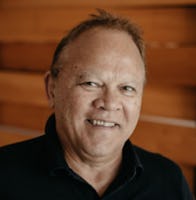
Ngāti Rārua and Te Māhurehure, QSO Chair, Wakatū Incorporation and Te Tauihu Intergenerational Strategy
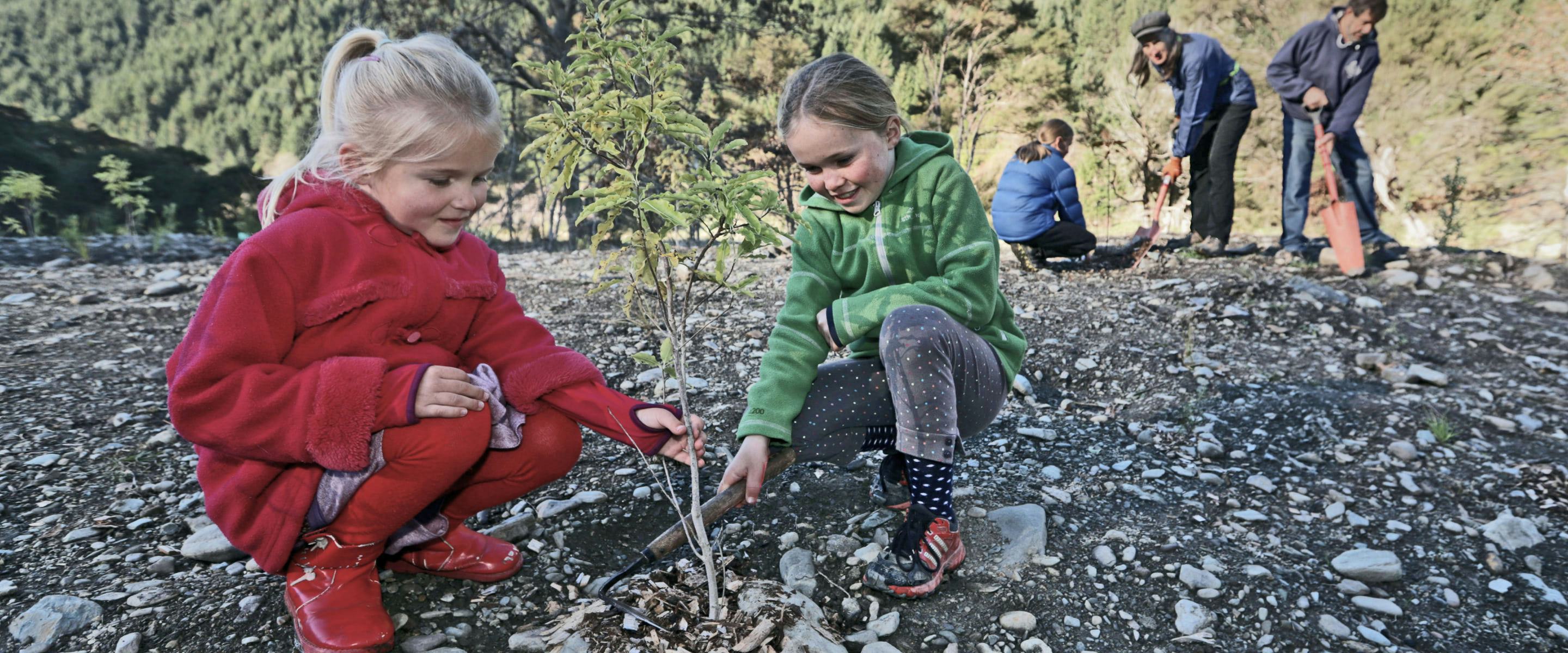
Te Rautaki-ā-Rohe mō Te Tauihu: Our Regional Strategy for Our People and Place
The Te Tauihu Intergenerational Strategy is the start of the design of the future we want, as the people of Te Tauihu.
The draft strategy was released for public feedback in December 2019. It was released early to generate thinking and discussion and it has been successful in doing so. The final Strategy advances that thinking and it is now up to each group, organisation or individual to determine how they may adopt, use, align or incorporate all or parts of the final Te Tauihu Intergenerational Strategy (the Strategy) into their plans and projects moving forward.
The Strategy has been a culmination of thinking, analysis and work that has been convened by Wakatū Incorporation in partnership with our three councils (Marlborough District, Nelson City and Tasman District), Ngā Iwi o Te Tauihu (Ngāti Apa, Ngāti Kuia, Rangitāne, Ngāti Tama, Te Ātiawa, Ngāti Koata, Ngāti Toa and Ngāti Rārua), Central Government, Nelson Tasman Regional Development Agency, Nelson & Marlborough Chambers of Commerce, business, community and the Nelson Marlborough Institute of Technology.
An integral part of the development of the Strategy has been the engagement that has taken place. We have endeavoured to foster a positive, inclusive, and uplifting community conversation. The people of Te Tauihu have relished the opportunity to think and prioritise across an intergenerational horizon which reflects the perpetuity of our natural world, and which gives us a mandate to tackle some of the major issues of our time. Pre-COVID, we have had good growth in GDP, low unemployment and we began to make steps to address our relationship with our environment. However, it was also acknowledged during our engagement that we have battled to generate high value jobs, make real gains in productivity and address the inequity and inequality that is happening between different groups in health, housing, education and incomes.
Over 30,000 reached through social media and online channels.
Over 1,000 people participated in live events.
Over 25 live events and workshops held.
The Strategy has been developed as a framework that can be used by everyone. It has made us think harder about the health and wellbeing of
our communities and that it is no longer allowable to ignore the gaps in inequality that have been occurring and that will only worsen with COVID-19. The Strategy is an opportunity for a RESET for ALL people of Te Tauihu. How we live, work, learn and interact with each other and our environment.
The Vision for the Strategy is: Tūpuna Pono, To Be Good Ancestors. At the heart of the Strategy is the wellbeing of the people and places in Te Tauihu (Oranga Te Tauihu), with a particular focus on the wellbeing of current and future generations and the responsibility we have, as the current generation, to pass on the taonga of Te Tauihu in a better state than when these taonga were placed in our care.
In the process of developing the Strategy, we have developed the first iteration of a wellbeing framework for Te Tauihu. This is called Oranga Te Tauihu. To be Tūpuna Pono, Good Ancestors, it is necessary to effectively manage a wide range of different cultural, economic, environmental and social outcomes. We have identified eight intergenerational wellbeing outcomes that help us understand the different realms of Oranga Te Tauihu, their interconnectedness and our relationship with them.

Through the intergenerational wellbeing outcomes and our engagement we have identified 17 actions that can be worked over-time to achieve Oranga Te Tauihu. These actions vary from addressing the inequity and inequality in health, developing an oceans economy strategy that creates value through sustainable harvesting and an Iwi led Te Reo Māori Strategy for Te Tauihu. In order to support these actions we have also identified the tools that will guide and enable our decision-making and long-term success. For example, further development of our wellbeing and equity monitors, trusted data and the design of an interactive platform to engage with community on the Strategy and Actions as we progress. It is important to note that the Strategy is not ‘owned’ by one group. It has always been intended that the actions will be prioritised and delivered by a range of different organisations, individuals, businesses and/or community groups.
COVID-19 has significantly impacted our planned second stage of work which included the completion of a detailed action plan for the Strategy. Unfortunately, we were unable to raise the necessary funding for this work, however we have continued to work with regional stakeholders to identify and confirm the Actions for Te Tauihu. We can be proud of what we have achieved to date and we acknowledge that there is still much more to do.
Previous and current generations have experienced pandemics and events of global significance. The arrival of COVID-19 will impact on every aspect of our lives and livelihoods. The Te Tauihu Intergenerational Strategy is an opportunity to be a constant in our lives, to guide us to look ahead and prepare for tomorrow, creating our own future and the future of our children and the generations to come. Let’s reset and choose not to revert to yesterday’s ways.
Tūpuna Pono: To Be Good Ancestors
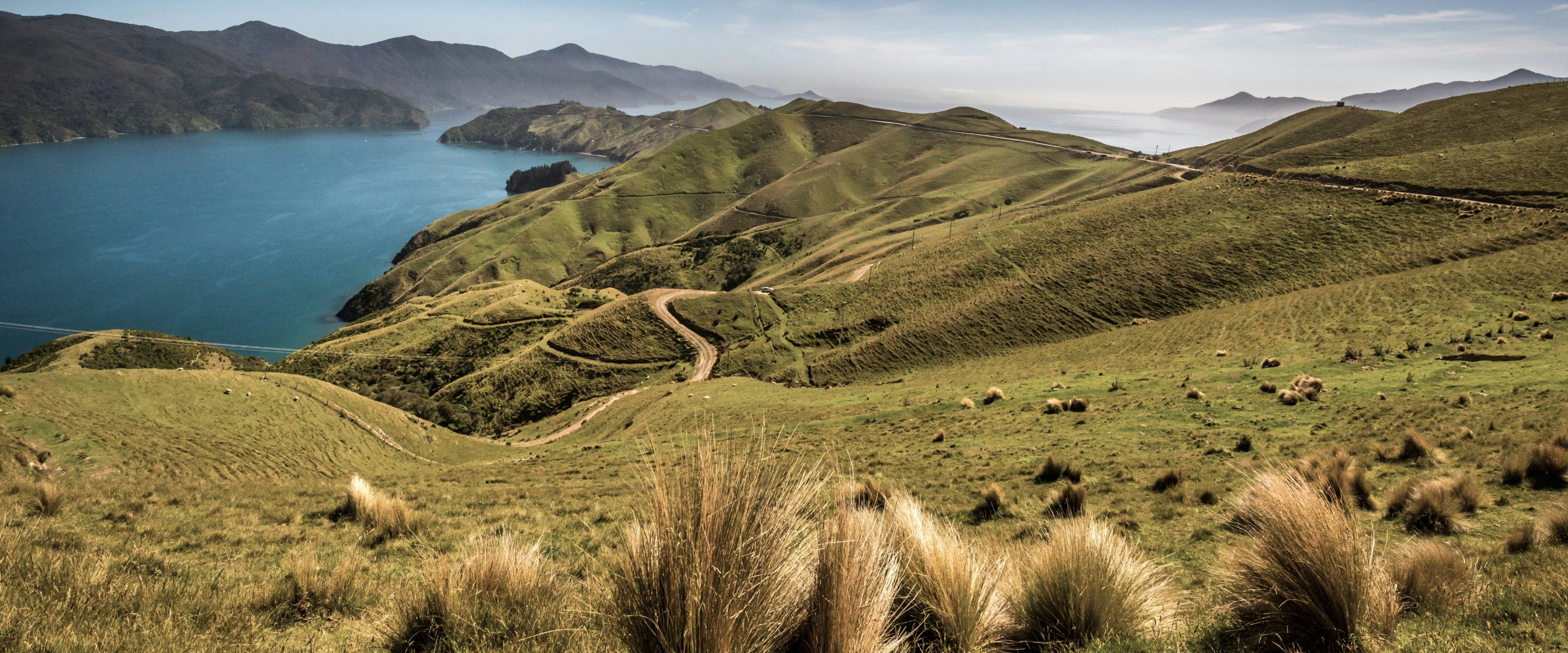
Te Māhere Rautaki Whakatupuranga o Te Tauihu: Te Tauihu Intergenerational Strategy Framework

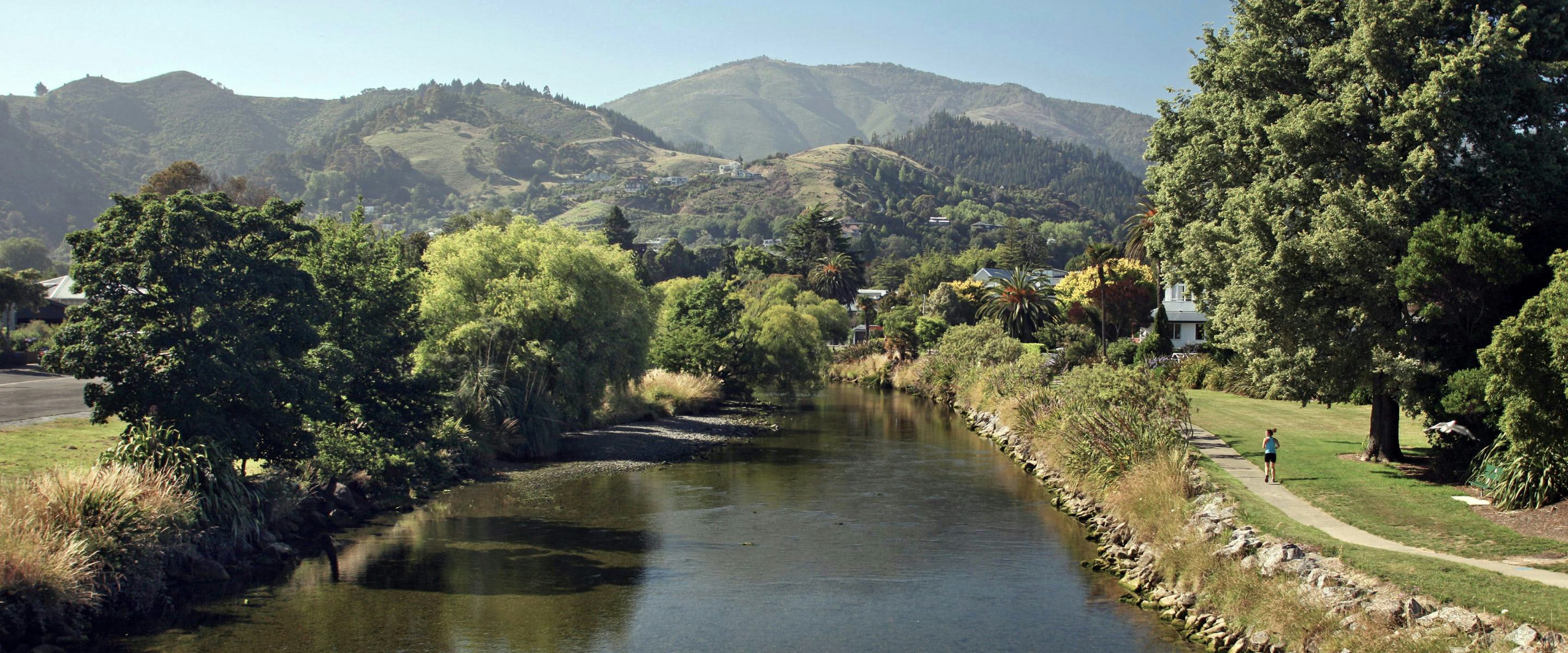
Te Mana Motuhake o Te Tauihu: We live in a special place
Te Tauihu is the name of the rohe made up of Tasman, Nelson and Marlborough and the people of Kurahaupo, Tainui, Tokomaru waka and the
many. The Te Tauihu Intergenerational Strategy (the Strategy) is a new approach to regional development from Mohua (Golden Bay) in the west to Kapara Te Hau (Lake Grassmere) in the east. It has a life span not of years, but of generations.
We live in a special place. We have a history, culture, whakapapa (geneaology), beautiful landscapes and opportunities, and our leaders, Iwi, businesses and community organisations are already working hard to protect and enhance our region.
The Strategy is a wellbeing framework for everyone in our community. It has:
- A vision that places Oranga Te Tauihu - the wellbeing of our people and our places over generations - at its heart.
- Our shared values that will guide us.
- Intergenerational wellbeing outcomes that our communities want.
- Identified actions.
- The tools we need and the enablers to help us achieve Oranga Te Tauihu.
Te Whakakitenga:
Our Vision
Tūpuna Pono: To Be Good Ancestors
Our vision recognises what is important to the generations of Te Tauihu – balance and regeneration, leaving a legacy that we can be proud of and contributing to a higher purpose beyond ourselves.
We are the people of Te Tauihu. Together, we care for the health and wellbeing of our people and our places. We will leave our taonga in a better state than when it was placed in our care, for our children and the generations to come.
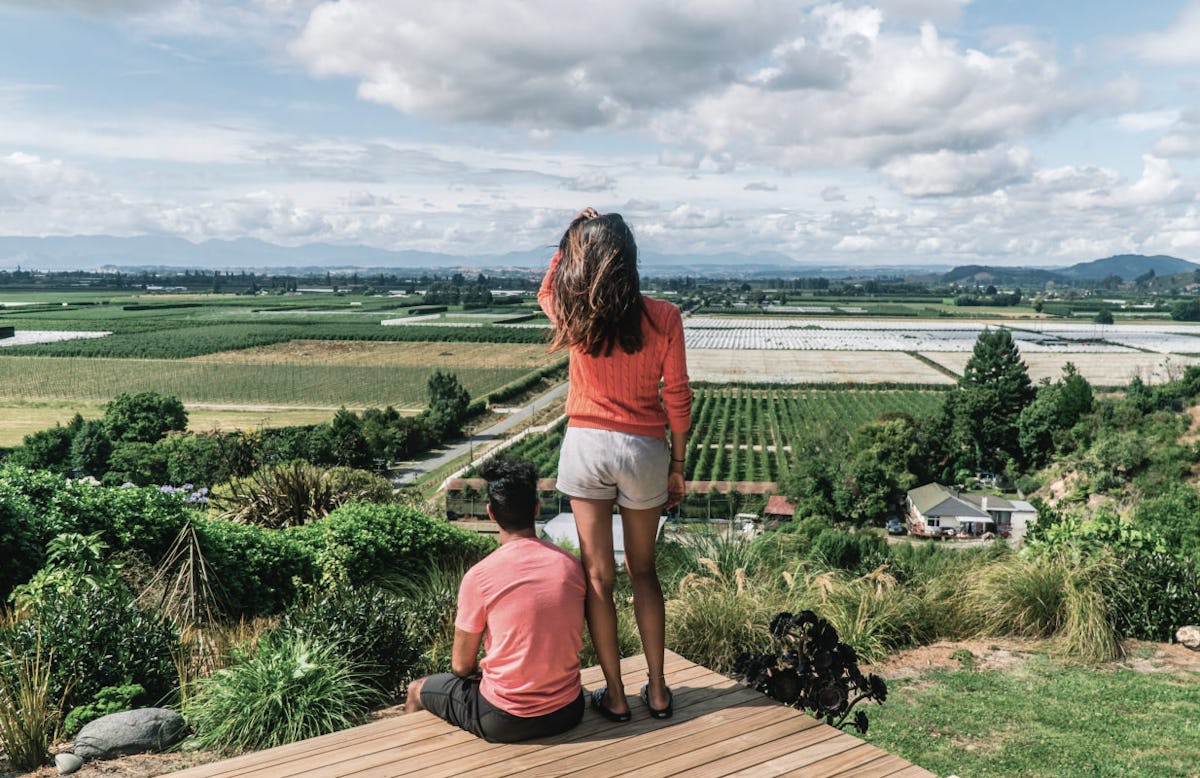
Our vision statement was explored with the rangatahi (young people) of Te Tauihu. They identified the following important aspects of our Vision:
- 1
Restore and value our connection to the natural world
Rangatahi clearly recognise that our planet has existed for billions of years, while we are only recent additions. They understand that the natural world physically nourishes and sustains Rangatahi are worried that consumerism and technology are breaking our connection to the land and that this must be addressed. They want to leave nature ‘better off’ for future generations. This means a wide-scale change of behaviours and practices across society to reduce our environmental footprint.
- 2
An inclusive society where no one is left behind
Rangatahi emphasised that we are all part of humanity. By understanding our shared histories and different cultures, we can be united rather than divided. We need to include diverse groups around our decision-making tables and enable people to engage in a range of ways that are accessible and meaningful. Young people need to be at the heart of decision-making.
Te Reo Māori should be a living, vibrant and widely spoken language in our region. Hand-in-hand with this is honouring Te Tiriti o Waitangi and embracing tikanga Māori.
Rangatahi and people on the fringes are not a problem to be solved, but a potential to be harnessed. We need an inclusive society, and look to reduce inequality in income, health, housing and education. Rangatahi also recognise the mental health issues we face as a society.
- 3
A resilient sustainable economy
Rangatahi want to support businesses to transition to a lower environmental footprint and to the provide a living wage and opportunities so that people do not have to leave the region.
They want to bring the humanity back into the economy. They also want an education system that supports this, as they consider the current system is too narrow and creates unhealthy pressures on rangatahi.
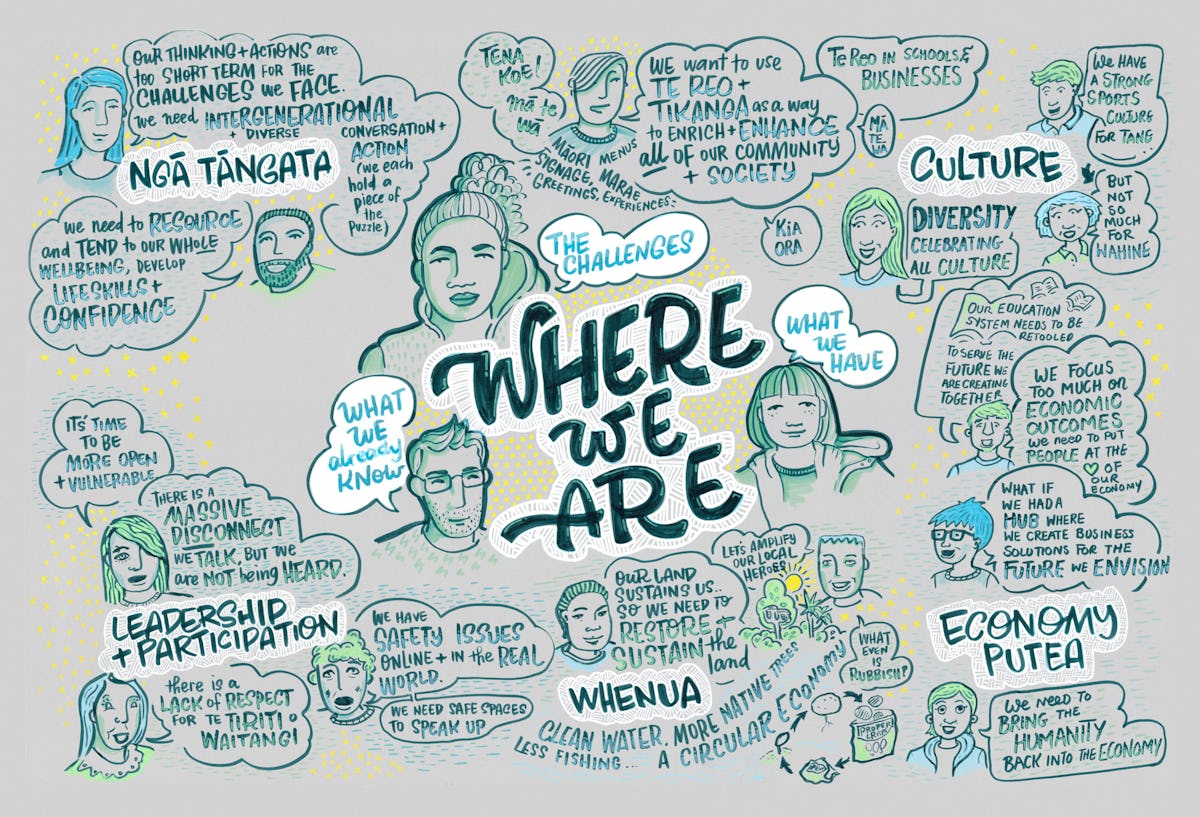
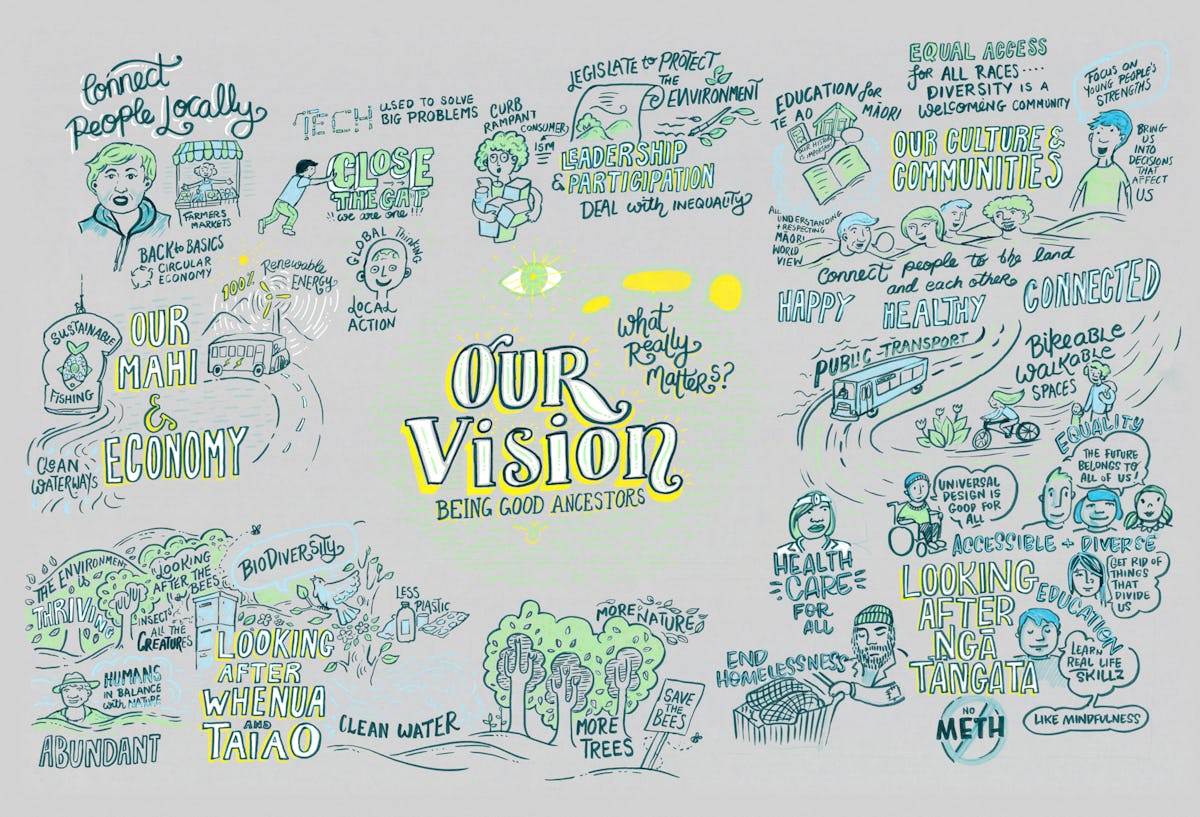
Ngā Uaratanga:
Our Values
Our values guide us in everything that we do now and in the future:
WHANAUNGATANGA: We value relationships, we will work together and with tangata whenua
PONO: We are honest, open and accountable.
RANGATIRATANGA: We are excellent in everything that we do.
AUAHATANGA: We are innovative and passionate about what we do.
NGĀ TAONGA TUKU IHO: We honour and respect our taonga, our legacy.
MANAAKITANGA: We care and support one another.
MANA TAURITE: We are inclusive and strive for equity and equality.
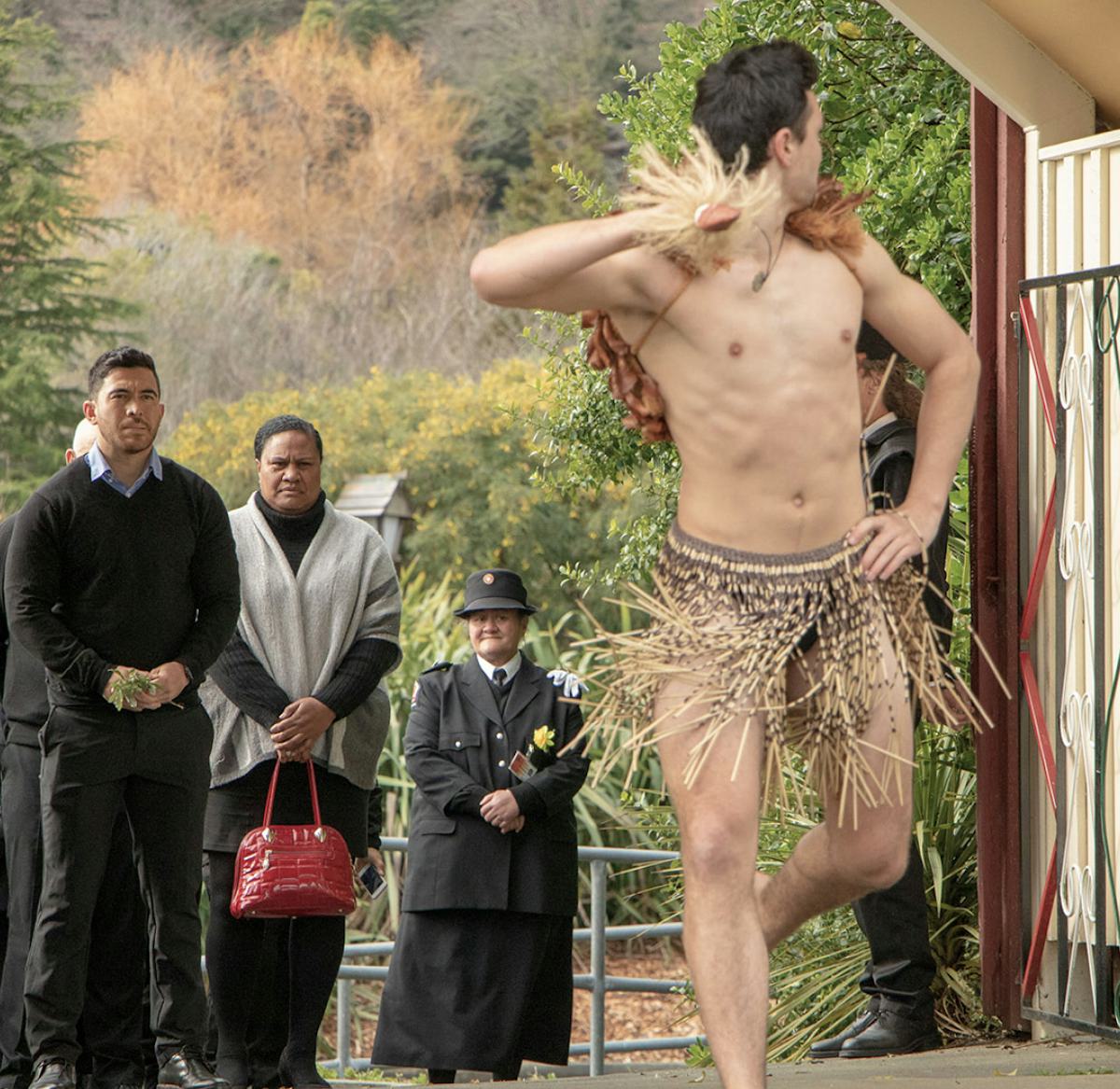
Te Ao Marama:
Our Future
The Māori concept of Te Ao Marama is the world of life and light. It is our future state for Te Tauihu. We will reach this future state, when we see an improvement in Oranga Te Tauihu, the wellbeing of our people and our places.
Our Intergenerational Wellbeing Framework for Te Tauihu, Oranga Te Tauihu, is a tool to help our community reach Te Ao Marama.
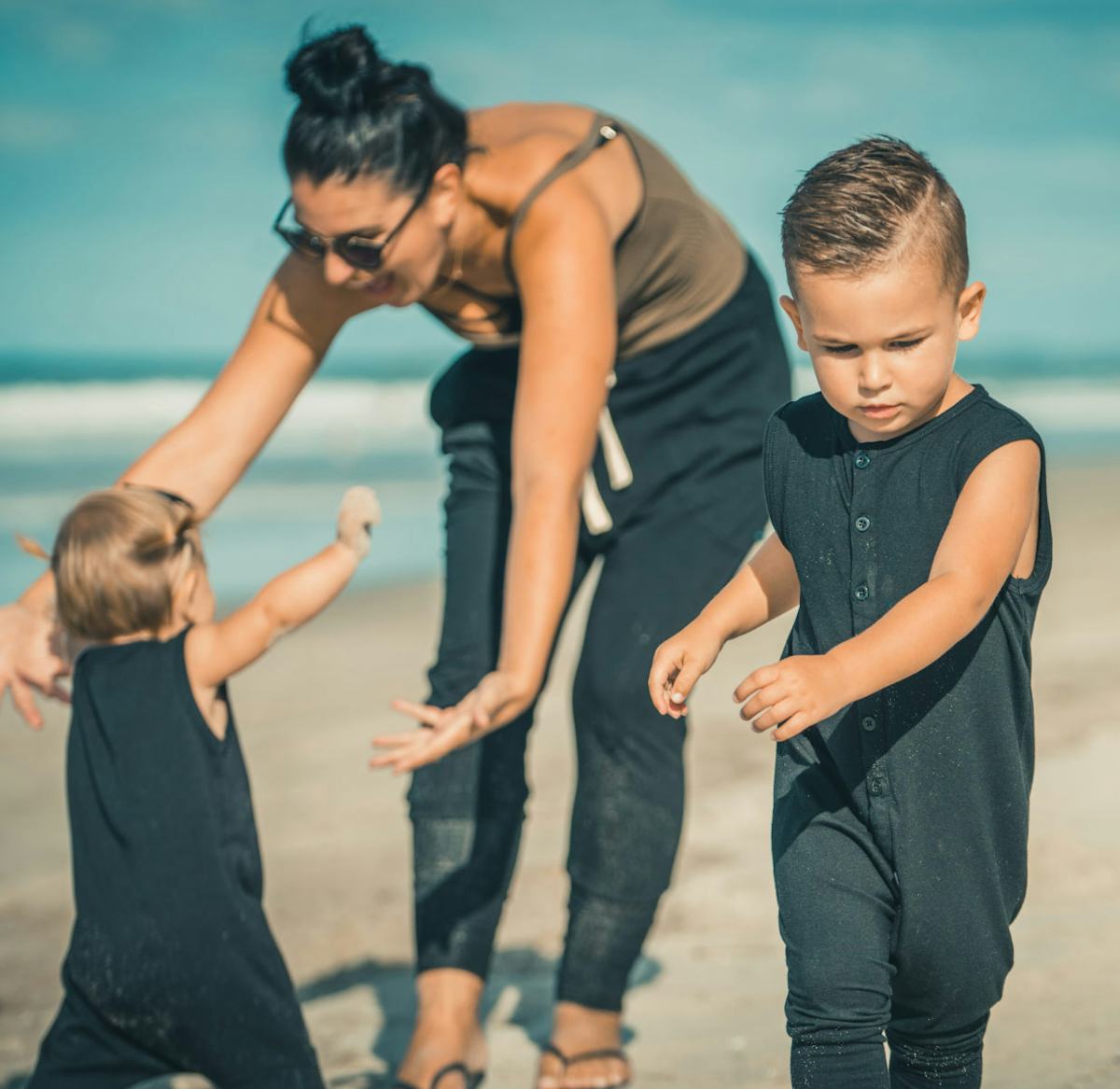
Oranga Tauihu: Our Intergenerational Wellbeing Framework
Oranga Te Tauihu was developed for the people of Te Tauihu. It is aligned with the frameworks used by the New Zealand Treasury (the Treasury) and the OECD internationally.* Our detailed Wellbeing Framework Report can be found on our website.
Oranga Te Tauihu guides us along a pathway of change and transition with:
- The intergenerational wellbeing outcomes our communities want.
- Our actions.
- The tools we need.
- The enablers who can make change happen.
* Treasury has a role to set out the Governments wellbeing objectives – both economic and other measures and it is an influencer of other government agencies whereby those agencies have to prove that their budget requests align with the Treasury’s framework in order to be funded. The Wellbeing Frameworks used by Governments and international agencies are underpinned by a large body of technical and academic learnings.
Ngā Hua Whakatupuranga me ngā Mahi Matua: The Intergenerational Wellbeing Outcomes and Actions
There are eight intergenerational wellbeing outcomes that capture what matters most to the people and places of Te Tauihu. They are the aspirational goals we will work towards and against which we will assess our progress to wellbeing.
These wellbeing outcomes are expressed simply but involve complex, interconnected and overlapping matters that can only be addressed by looking at issues in context, not in isolation.
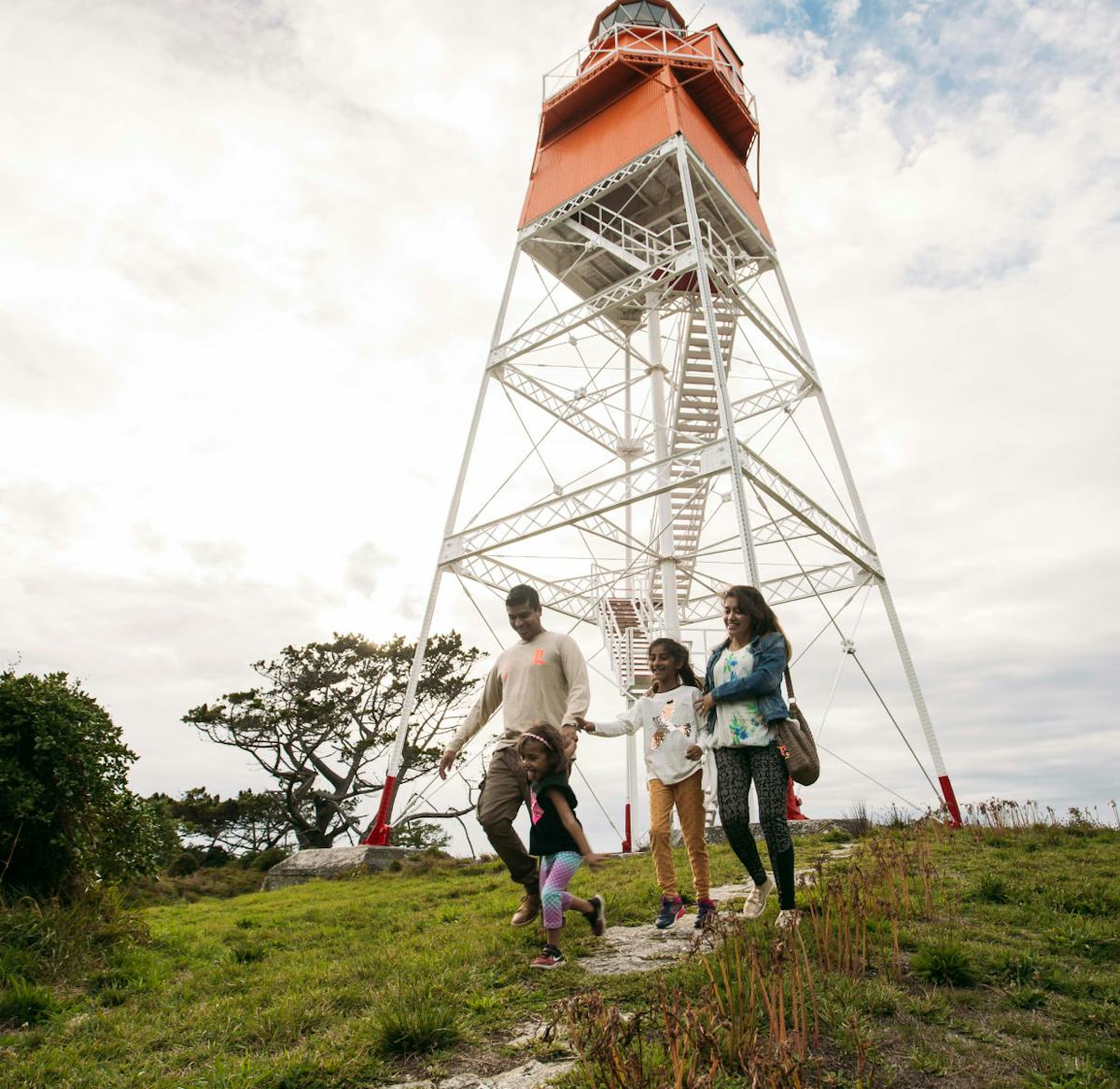
To move towards our Intergenerational wellbeing outcomes, we need actions to create change. The actions that we want this Strategy to stimulate and enable may come in many forms: initiatives, projects, audits, studies, business cases, and new models for making decisions and investing. They will be undertaken across the community, by businesses and organisations, Iwi, Marae, community groups and individuals, and will track to different timeframes. Throughout our engagement and as we have progressed through COVID-19, we have identified 17 actions that can be worked over-time to achieve Oranga Te Tauihu.
Each intergenerational wellbeing outcome, their interconnectedness with each other and the actions that have been identified and prioritised through the strategy process are now outlined below.
Te Taiao
The Natural World
Our relationship with the natural world is healthy.
When we speak of Te Taiao, we mean ngā atua Māori and all aspects of our natural, social, physical and material worlds. In relation to our natural world, we mean our wai (water) in all forms - the rivers, lakes, wetlands, estuaries and oceans; our whenua (land, soils etc.); our air; and all living things such as species of flora and fauna, animals etc. that inhabit them.
When we speak of Te Taiao we are also talking about our relationship with nature - humanity and the natural world are interconnected and sustain each other in a relationship of mutual respect. Underpinning this relationship is responsibility and reciprocity, where our natural world is acknowledged as a living entity and our atua Māori. That means that the first right must be the right of nature to thrive without overuse. Any use of the environment that is granted is treated as a gift or a privilege. A healthy relationship is about finding a sustainable use of our natural resources and reversing degradation that has already taken place.
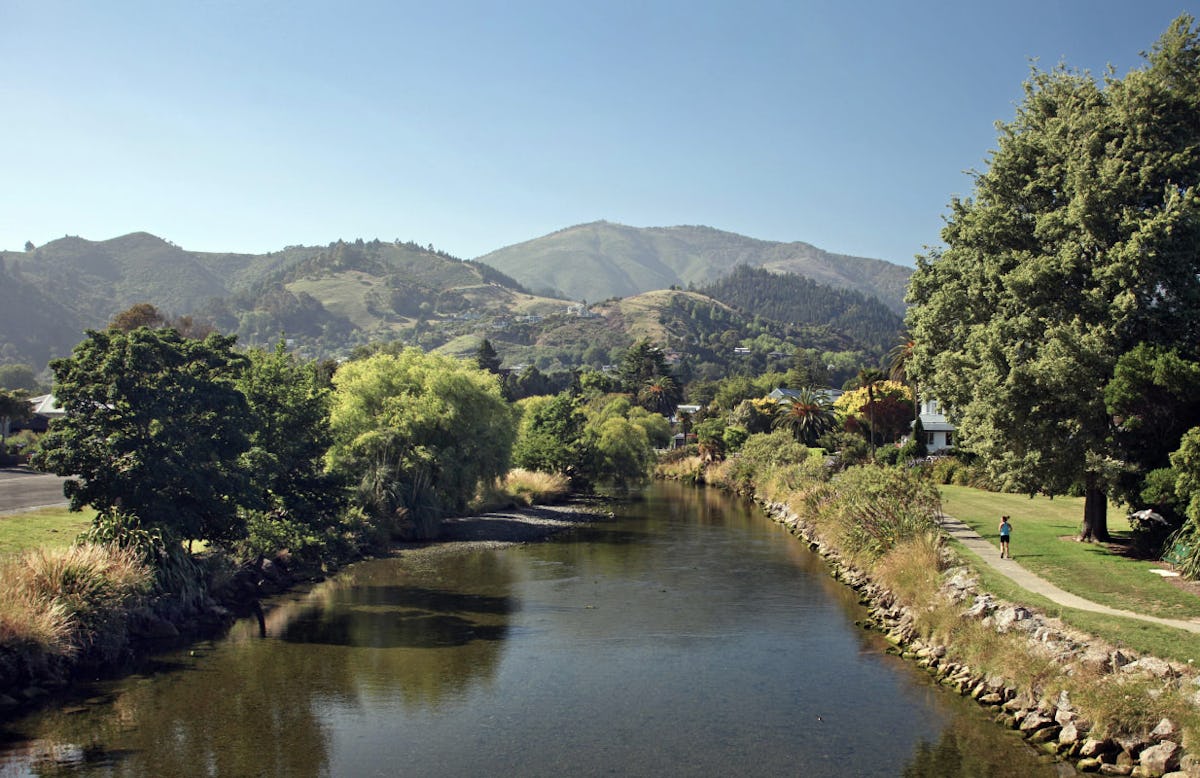
We have a unique natural environment in Te Tauihu, with over a fifth of New Zealand’s coastline, three national parks and the Marlborough Sounds. However, approaches to soil management, habitat loss and pollution are creating significant stress on our region’s ecosystems. We know that the state of the natural world improved during the COIVD-19 lockdown, so we have the opportunity to hold on to those gains. This includes reducing carbon emissions, enhancing freshwater quality and our marine environment, as well as protecting our taonga species, having thriving landscapes and producing less waste.
The Te Taiao intergenerational wellbeing outcome interconnects with our other intergenerational wellbeing outcomes and some of these are outlined here.
Pūtea
Economy
Our resilient economy allows our people, places, communities, and businesses to thrive.
The scale of COVID-19’s economic impact is unprecedented. Global tourism and education services have served Te Tauihu well in the past
and have been an enormous export earner and employer. However, these tourists and students will not be coming back in the near future. Currently we rely heavily on the food and fibres sector (aquaculture, horticulture, viticulture and forestry), and manufacturing (high value engineering and design). Weaknesses, such as our lack of control over key supply chains and our ability to collaborate make us vulnerable.
People, communities, Iwi and consumers will seek out organisations that are aligned with their values and beliefs. As businesses, Iwi, communities and local and central government organisations, it’s time to collaborate better in Te Tauihu and as sectors across Aotearoa. It is also an opportunity for us to take stock of our business models and evaluate whether they remain fit-for-purpose.
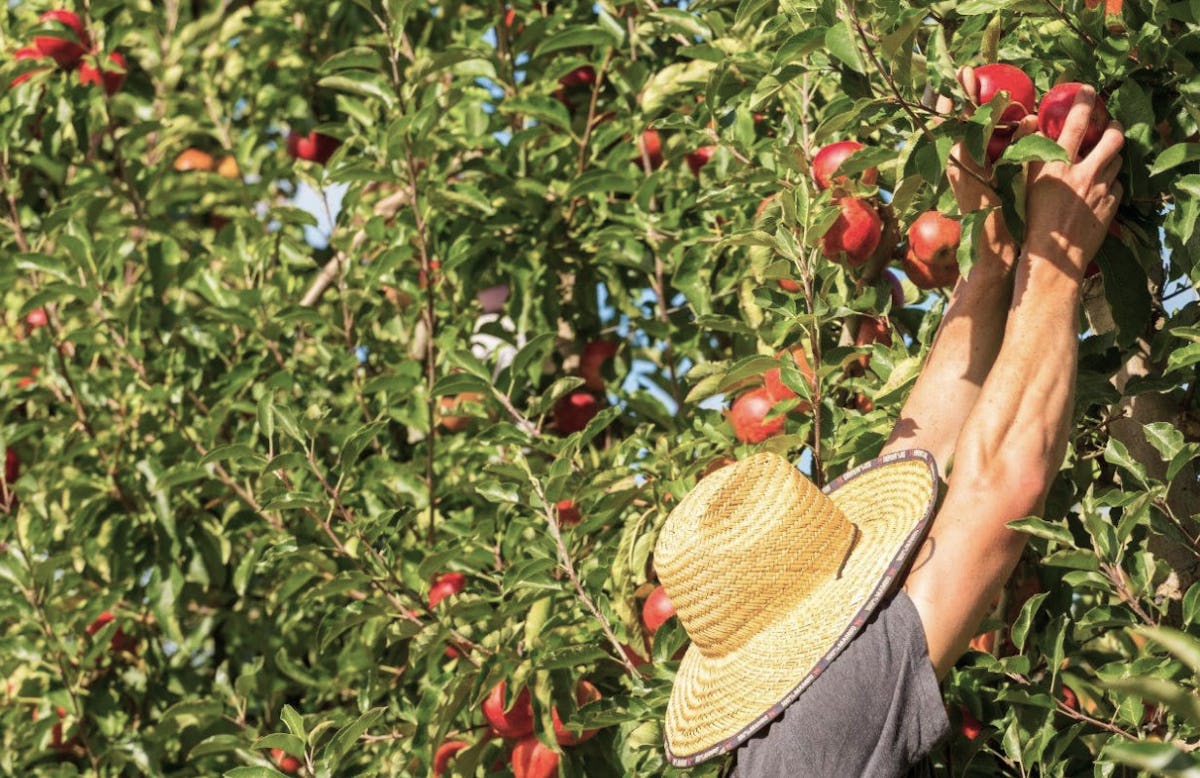
A longer-term rebuild presents an opportunity to RESET by:
- Harnessing technology in our businesses and in Te Tauihu. For example, exploring delivery models through digital (high value nutrition and natural products tech, consumer engagement and IP exports), automation and robotics, artificial intelligence and big data, augmented reality IOT, autonomous vehicles and smart transport systems and planning and investing in cyber security.
- Developing new skills development and retraining people with a focus on building a more technological literate workforce in health, education and entrepreneurship.
- Attracting talent and intellectual capital and businesses to Te Tauihu, with the expectation that they are focussed on the economy of the future that we are trying to build.
- Incentivising risk and supporting entrepreneurs and businesses better, by helping them innovate, commercialise new solutions and grow, so as to drive the change that will be required if we are to remain relevant.
- Attracting investment and capital into Te Tauihu.
- Supporting our local businesses by promoting them locally whilst maintaining a license to operate in our key export markets. We acknowledge ten current economies that have been identified in Te Tauihu.
- Aviation
- Technology
- Oceans/Green
- Science & Research
- Education
- Medical Health & Wellbeing
- Innovation & Creation
- Arts & Culture
- Entertainment, Hospitality
- Sustainability - Reviewing the business and operating model of NGOs that provide services and support across so many areas of Te Tauihu. The unprecedented demand on the public and charitable funding is making continued operations untenable for many organisations and a reset is needed so that we deliver maximum outcomes on investments.
The Pūtea intergenerational wellbeing outcome interconnects with our other intergenerational wellbeing outcomes and some of these are outlined on the next page.
Te Tauihutanga
Identity
Our people are proud of their individual and shared identity and feel a strong sense of belonging. We treat each other with kindness and respect.
Our connection to our land, history and culture defines who we are. It also connects the generations, bringing young and old together. Our language, Te Reo Māori, is a unique taonga for New Zealanders, as well as being fundamental to our national identity, and a gateway to better understanding the rich history and culture of Aotearoa. This includes our knowledge and awareness of Te Tiriti o Waitangi.
Te Tauihu is a beautiful region and we have a strong sense of collective identity, yet people can also express their own individual identity. We welcome new migrants, including refugees, to our region, and want everyone to feel they belong here.
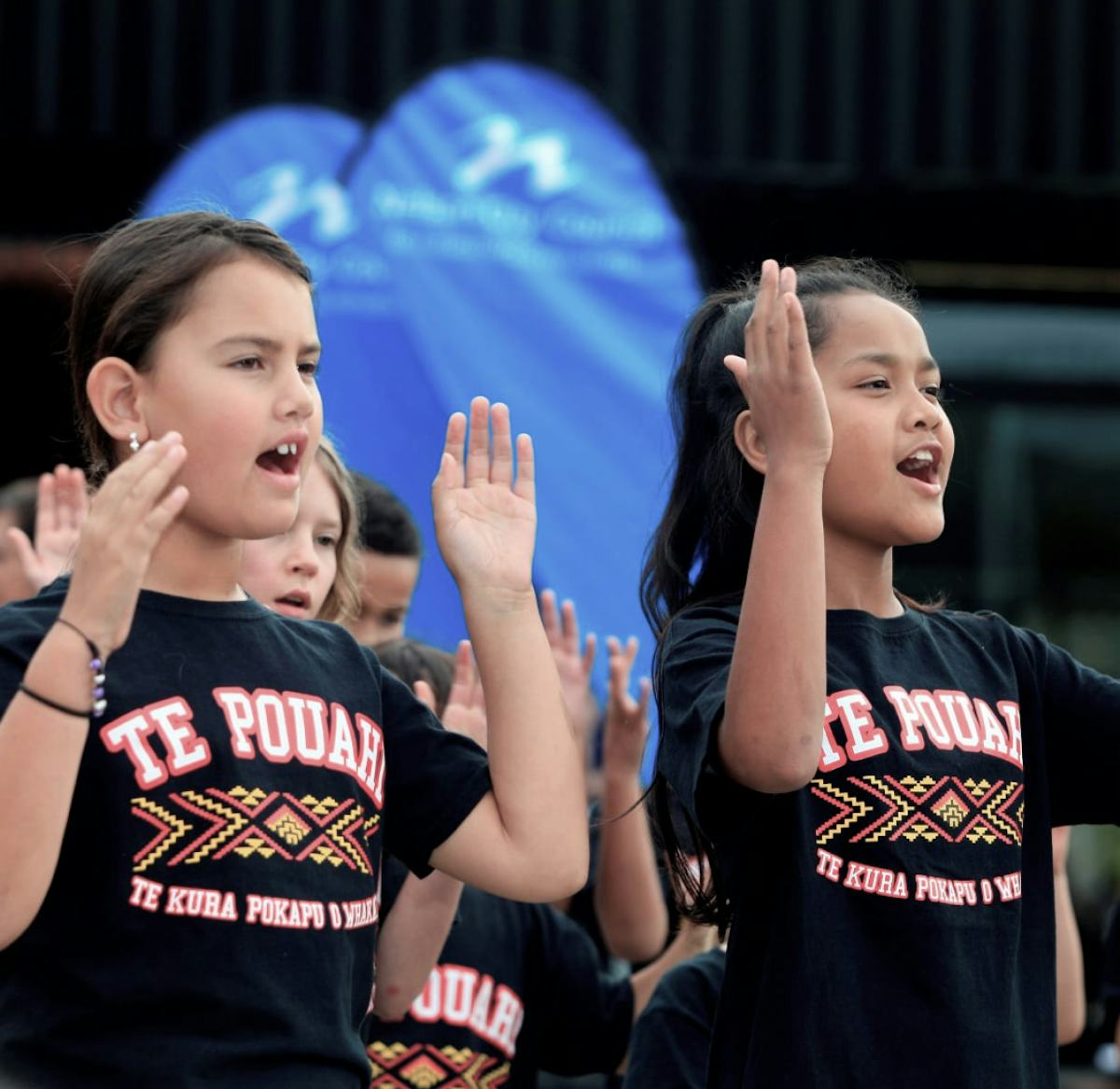
This Intergenerational Wellbeing Outcome is about enriching the lives of the people of Te Tauihu by promoting a proud and connected culture. The arts, media, marae, heritage and sports organisations are here for us all to enjoy and we recognise the considerable amount of work that is done by volunteers on limited means.
The Te Tauihutanga intergenerational wellbeing outcome interconnects with our other intergenerational wellbeing outcomes and some of these are outlined on the next page.
Tangata
People & Communities
Our people and communities are welcoming, healthy, and safe. Our people are connected across generations, cultures, and distance.
When we talk of community, we mean all people and whānau (families) in Te Tauihu interacting and supporting each other. By working together, communities can tackle bigger problems than they can as individuals working on their own.
As human beings we are social creatures and cannot thrive without a healthy social and physical connection to each other. During COVID-19 we have experienced lockdowns and the loss of freedoms that we once took for granted. More conversations about climate change, plastic waste and inequality took place and we started to make more purposeful decisions, aligned to our value and beliefs about how we socialise, what we purchase and who we purchase from.
We know in Te Tauihu there are inequalities in health, education, income and housing. The next few years will only amplify this further as unemployment rises and more people are forced into poverty. Our social, political and economic models are having to move hard and fast to keep up. There is opportunity for better coordination and action to address the issues as well as new models that are holistic in their approach.

The places we live in need to feel safe, secure, and welcoming by providing support when needed and opportunities to share and grow. Our communities need to be able to participate in family life, socialise with friends, join in with community activities and take part in recreation and leisure pursuits as well as the arts and culture.
The Tangata intergenerational wellbeing outcome interconnects with our other intergenerational wellbeing outcomes and some of these are outlined below.
Te Rākau Taumatua
Place
Our people can access affordable and quality places to live. Our shared spaces are places where people want to be.
The wellbeing of our people is likely to be greater if our shared places and spaces are well designed. The quality and accessibility of our places and spaces influence how we live, work and connect together.

Shared spaces increase vibrancy and connection if used well. Smart and innovative design of our places and spaces also supports our ability to be resilient to natural events and climate change. ‘Master Planning’ – strategic thinking about our places and spaces at a town, city, or district wide scale – ensures that long- term impacts and priorities are considered.
Marae and community spaces are important communal spaces for our people that require long-term sustainable funding and resourcing.
They are used for cultural experiences, hui (meetings), celebrations, tangi (funerals), recreation and educational workshops. Housing is also part of ‘place.’ The quality and cost of housing has a huge impact on the wellbeing of people, whānau and community. Affordability, access and quality of housing is a major issue in Te Tauihu.
The Rākau Taumatua Intergenerational Wellbeing Outcome interconnects with our other intergenerational wellbeing outcomes and some of these are outlined below.
Papa Whenua
Infrastructure
Our people have resilient transport, communications and energy networks, and water and waste systems.
Several trends are impacting infrastructure and transport: greater need for investment due to ageing assets in some parts of our region; a growing population; a need to reduce emissions from transport; and the need to make infrastructure resilient to extreme weather events and adapt to technological disruption.
Infrastructure is also an enabler of economic activity and individual and communal wellbeing, so it’s important to have a clear long-term vision of what needs to be enabled. For example, we will need a strong digital infrastructure to support a changing economy, reliable and resilient lifeline infrastructure to support basic wellbeing, and well-planned urban and rural infrastructure to combat social isolation and facilitate community engagement.
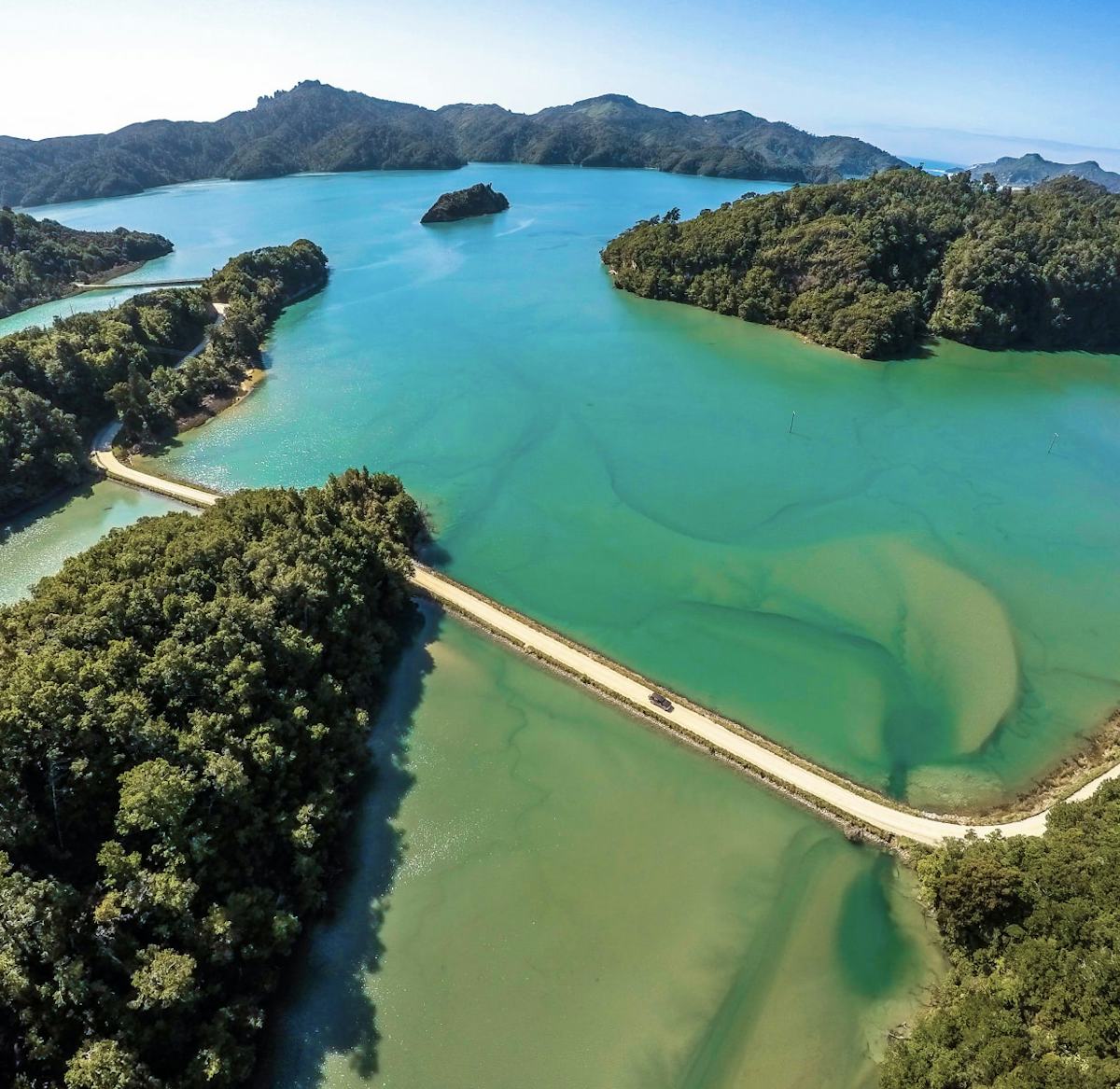
Our community has expressed a strong desire for significant change to the region’s infrastructure. Investment will be one of the biggest enablers. This includes gaining investment capital to facilitate improvements and looking to new diverse sources of capital as well as traditional ones.
We need to look for ways to be more efficient and effective e.g. using technology and non-traditional solutions to facilitate change within the limited resources we have to fund infrastructure. Sustained and active communication of the key trade-offs of cost versus service versus environmental impact to the community will be critical. Infrastructure is as much about the demand as it is about the supply.
The Papa Whenua intergenerational wellbeing outcome interconnects with our other intergenerational wellbeing outcomes and some of these are outlined below.
Rangatiratanga
Leadership
Our decision-making is collaborative, courageous, inclusive, respectful and acts for the long term. We uphold the values and rights of the people and taonga of our region.
Courageous and bold leadership is about leading by example. It is about taking a stand because it is the right thing to do, it is about making decisions that are aligned to a vision and values that are purposeful and it is about bringing people on the journey, we do this together.
Leadership not only considers our local and central government leadership, but leaders across all parts of our society, including Iwi, hapū, businesses, workers, young people, the voluntary and community sector and many other organisations and individuals.
Te Tauihu currently has strong leadership, as well as high voter turnout and trust in many public institutions. However, some of our current leadership structures and the machine of bureaucracy can create silos (or the perception of them) and the community emphasised the need to overcome these.
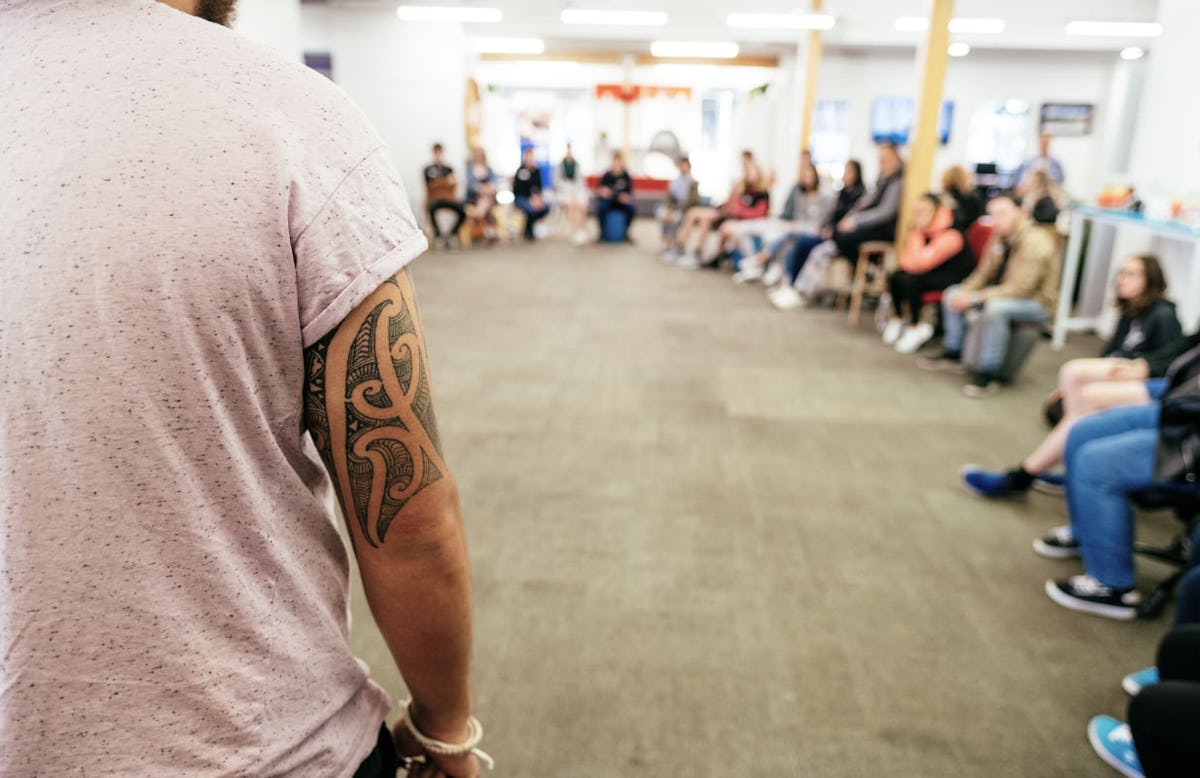
Our rangatahi (young people) want an inclusive society where no one is left behind. Hand-in-hand with this is honouring Te Tiriti o Waitangi and embracing tikanga Māori. There is an opportunity to start the conversations about our understanding of the history of Te Tauihu and Te Tiriri o Waitangi that leads to meaningful and enhanced leadership across Te Tauihu.
Better collaboration, dialogue and planning between the leaders of Te Tauihu and Government will be key moving forward.
The Rangatiratanga intergenerational wellbeing outcome interconnects with our other intergenerational wellbeing outcomes and some of these are outlined below.
Mātauranga
Knowledge
Our people are knowledgeable, curious, and creative.
In this strategy the term “knowledge” is used in its broadest sense. It includes understanding history and data about our region to make better plans, but also how we innovate, learn and apply knowledge for the benefit of Te Tauihu. It also includes different types of knowledge systems within and beyond our community, all of which can help us.
Knowledge helps us to be productive, enables people in Te Tauihu to gain employment and start their own businesses, and allows businesses to bring in the skills to grow. Knowledge also helps us understand our region to know what to change, how we will solve our problems and also advocate for our region. It enhances our creativity, our awareness of our own and each other’s cultures and histories, and our tolerance and spirit of citizenship.
We need to acknowledge and nurture different knowledge systems e.g. mātauranga Māori (traditional knowledge) as well as new technological learnings . We may need to find new, creative ways to grow our knowledge and to nurture our intellectual capital.
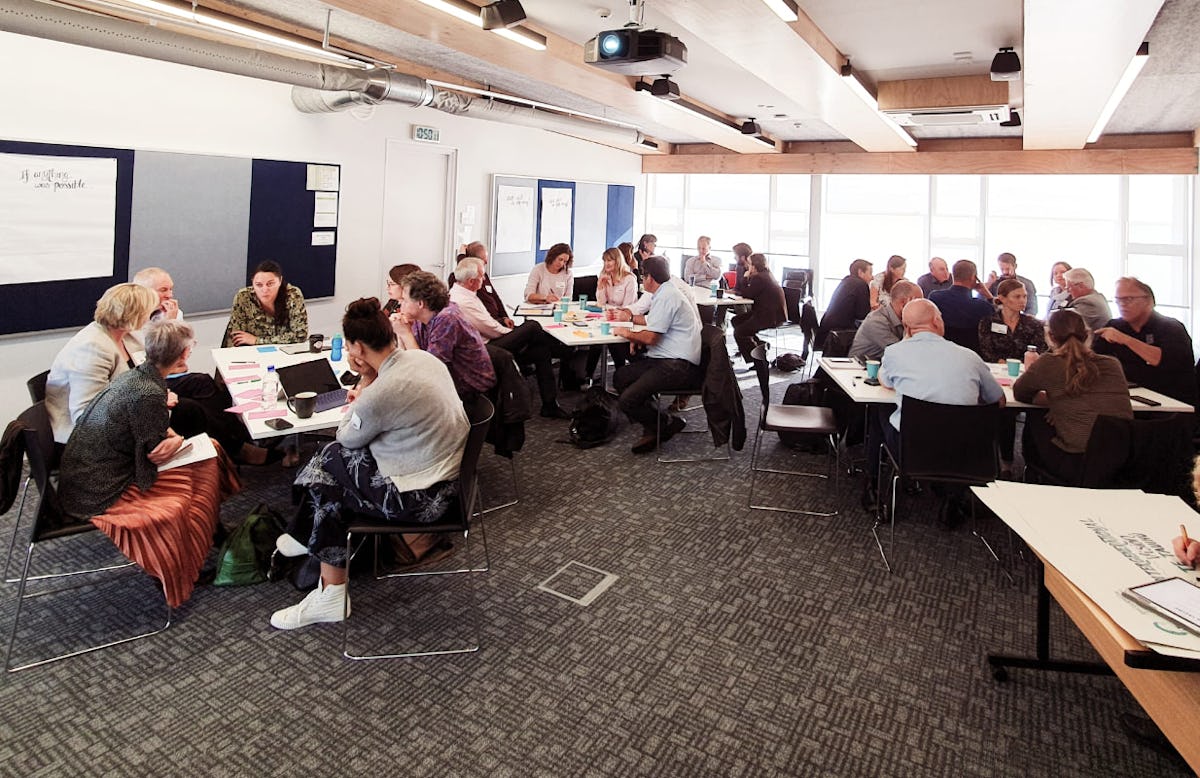
Mātauranga will underpin our efforts now and into the future as we tackle our issues and grasp the opportunities that come our way, developing our intellectual capital, supporting our brightest and best to lead the way to new ideas and ways of doing things. It has the potential to be the most powerful enabler to drive ourselves toward the future we want to create.
The Mātauranga intergenerational wellbeing outcome interconnects with our other intergenerational wellbeing outcomes and some of these are outlined below.
Ngā Taputapu Tika:
The Tools We Need
We have created the Wellbeing and Equity Monitors to enable us to monitor how we are performing in each of the eight intergenerational wellbeing areas compared to total New Zealand, so that we can see which areas are most in need of attention, and how we are improving over time.
Our tools to support our work towards achieving Oranga Te Tauihu will continue to be developed as we secure further funding. These tools include:
- Our Wellbeing and Equity monitors
- Trusted data and information
- The Community Engagement Platform
- Policy and Regulation
- Knowledge, Intellectual Capital, Science and Technology
- Investment
These tools will support our decision-making, so that there is:
- Alignment in our work and priorities in Te Tauihu.
- Analysis of the impact of policies and regulation on our ability to deliver Oranga Te Tauihu.
- Accountability, to demonstrate that we are moving in the right direction and that our limited investment is being used wisely.
- Impact, to ensure that what we are doing is working (our actions) and that we are achieving the intergenerational wellbeing outcomes.
The Wellbeing Monitor
Our Wellbeing Monitor has been designed to show us, at a high level, how our region is performing in the areas that are most important to us - our Intergenerational Wellbeing Outcome Areas. As we take action to make change in these areas, we can monitor our progress and see how our performance is improving over time. As we achieve change and the Strategy evolves, so too will the Wellbeing Monitor.
For each intergenerational wellbeing outcome area, we have selected reliable statistical indicators that give us a picture of that area. We have also selected indicators that show how the picture is distributed across different people and places – equity. For example, we can have high levels of regional GDP, but if that regional income is not distributed in an equitable manner we will still have many families on poor outcomes. These indicators are used in our Equity Monitor.
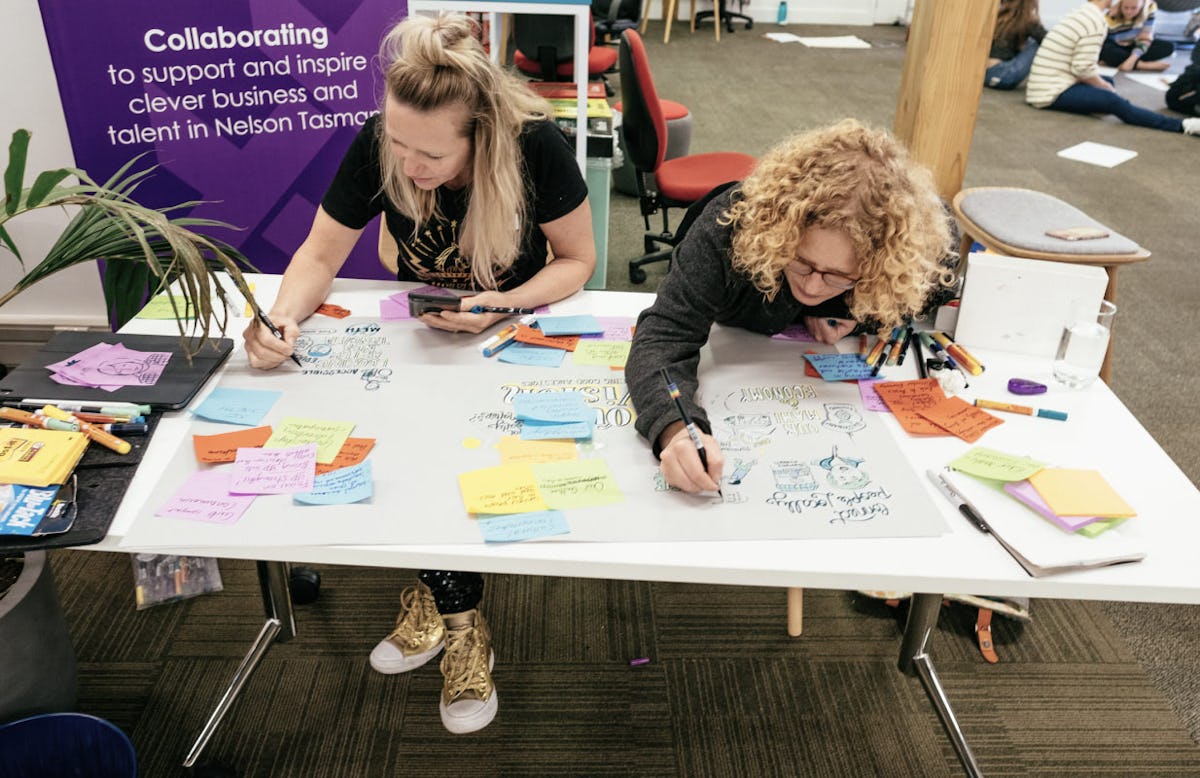
It’s important to be aware that data gathering in New Zealand can be patchy, especially when it comes to the regions. This means that in some areas, the indicators we would like to observe over time either do not exist, or are not of acceptable quality/ reliability or are not gathered often enough to be of use to us. Future phases of work on the Strategy will, over time, address these data gaps. In the meantime, we will work with what is available.
Our detailed Wellbeing Framework and Indicators Report can be found on our website, along with the data sources that we have utilised.
The Wellbeing Monitor provides a long-term means for tracking Te Tauihu performance against total NZ. That means that comparisons will move only very slowly over time. For day-to-day work on Actions and Projects, we will also use detailed datasets that will allow us to observe change at an annual level. In the diagram below, we have shown how Te Tauihu compares to average New Zealand in the measures we have selected. The dotted yellow circle shows how New Zealand is performing, and the blue lines show how Te Tauihu is performing. If our blue line reaches beyond the yellow circle towards the outside of the diagram, it means we are doing better than total New Zealand. If our blue line stays close to the centre of the diagram, it means that we are doing poorly.
For example, the Wellbeing Monitor report below shows:
- Our voter turnout is quite good, but our housing affordability is poor, with too many families spending more than 30% of their income on housing costs.
- We are a region where it is easy to express one’s identity, and where life expectancy is better than the national average; our unemployment rate is good i.e. low, but our median hourly earnings are below the national average.
- We have data gaps for environmental measures and for household crowding.

The Equity Monitor
We have also selected indicators that show how outcomes in Te Tauihu are distributed across different people and places – that is, the degree of equity in the region. The Equity Monitor shows that some parts of our community experience different outcomes to the average for Te Tauihu. Again, we have data gaps, but there are some clear indications of inequity. The gap between earnings for females versus males is worse in Te Tauihu than it is in average New Zealand, and the gap between male and female NCEA level 2 attainment is also worse in our rohe than for the country as a whole. We can also see gaps between the outcomes for Māori versus those for non-Māori compared to those gaps for average New Zealand – for example the Māori/non- Māori gap in life expectancy is much smaller in Te Tauihu than it is in average New Zealand.

Ngā Kaiāwhina
Our Enablers
Who can make the Change Happen?
The expectation is that the Strategy can be enabled and delivered by a wide variety of people - whānau, hapū, Iwi, workers, business, communities, learning institutes, NGOs, volunteers, change-makers and local and central government. We know that people want to be involved and that there are a number of initiatives and projects already underway. How you can participate, and help is outlined in the next section.
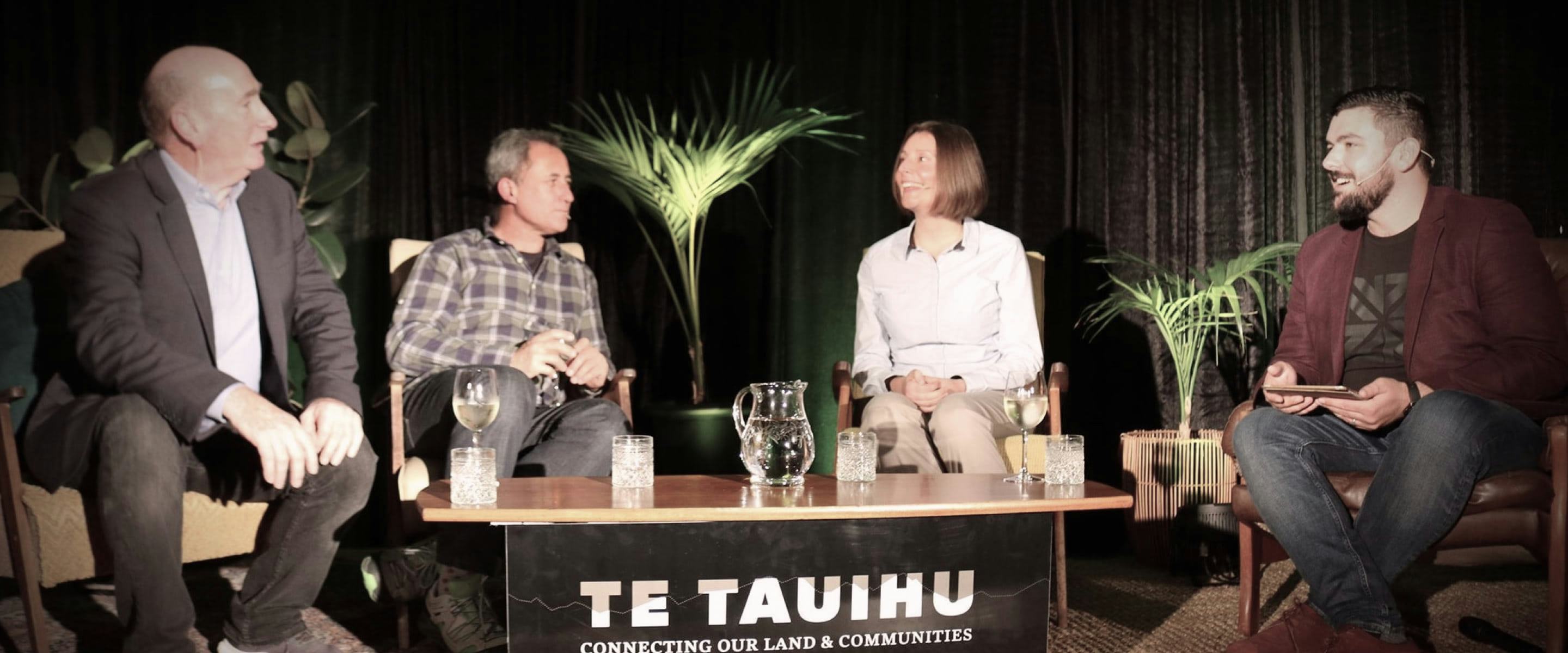
Te Anamata: Our Next Steps, Together
This Strategy belongs to all of us: enabling and making change will be a community-wide effort. We have six Next Steps to work on and we need you to help as well.
- 1
Work with community and business leaders to ensure that the Strategy supports our region’s short and medium term COVID-19 response and recovery activities.
There is a lot happening in our region that is focused on our short to medium-term COVID-19 response and recovery work. In some cases this work touches on aspects of our Strategy and the Actions that have been identified, but, primarily, the Strategy and Actions are focused on the long-term and generating lasting impacts for the Wellbeing of all the people and places of Te Tauihu.
This diagram illustrates how our Strategy compliments the COVID-19 response and recovery work that is already underway across our region:

- 2
Developing our 17 Actions
There are 17 Actions grouped under our intergenerational wellbeing outcomes. It was originally intended that community led Project Teams would be formed to develop these Actions, but, as has been mentioned, due to COVID-19 and our inability to secure necessary funding we were unable to proceed with that approach. Whilst this delay has been frustrating, it is also okay. Our Strategy has a long-term focus, and a delay of twelve months or longer to coordinate and develop some of our Actions will not detract from our intergenerational aspirations for Te Tauihu.
The Strategy has been developed on the premise that through collaboration we can do things better by doing them together. If Projects which align with some of our 17 Actions are already being developed and delivered, this is excellent: we need not duplicate them. We need to identify new opportunities for working together. Therefore, following the release of this Strategy, we intend to continue our discussions as to:
- How can we best make progress across our 17 Actions, ensuring that we have an impact on our desired intergenerational wellbeing outcomes?
- What Actions can we make a start on, noting that developing and delivering solutions may require a long-term, multi-year timeframe, particularly due to COVID-19?
- Who needs to work together to develop and deliver specific Actions?
- What steps can we take in the next twelve months?
- How can we keep people up to date on how we are progressing with the Strategy and initiatives that are happening across our region, especially as a part of our COVID-19 response and recovery, so that we avoid duplication of resources and we can leverage and support aligned activity?
- How might we maintain the profile of the Strategy and go about building a ‘family’ of aligned Projects that attracts investment and support from central government?
- Meanwhile, there will be some collaboration that can continue because it does not require new funding. For the next twelve months, as our COVID-19 response continues, we may have to ‘follow the energy and the resources’ and focus on two or three key Actions that are viable for development and delivery at this point in time.
- 3
Our Intergenerational Wellbeing Framework and Data Project - Oranga Te Tauihu
Subject to securing the necessary funding, we will develop a comprehensive collection of datasets and tools that everyone can use to see how we are progressing, performing and improving as we implement our Actions as a Region. These datasets and tools will allow us to examine not only the overall state of wellbeing and equity at high level (some of which we already have datasets for), but also those more detailed indicators that flesh out the picture to show what initiatives we are investing in to improve as a region, and what effect those initiatives are having.
The scope of work includes identifying datasets, sources and access methods; designing the database, platform and reporting requirements; populating the database; and developing the operational and management protocols including public access and data sharing. It also includes identifying and addressing gaps where data is not readily available.

- 4
The Community Engagement Platform
Subject to securing the necessary funding, we will continue to develop our existing website into a significant asset for the region. When completed, this Platform will have several functions in addition to the current communications focus, including:
- Hosting community conversations and networking so people can meet, share ideas, and develop activities in relation to the identified actions.
- Providing a Community Directory of groups, agencies, funding sources and other useful information.
- Providing links to tools and templates to help groups set themselves up properly.
- Providing access to our data and reports.
- 5
An Enduring Leadership Model
Following the release of the Strategy, our Steering Group will be revising their future role. We will need to ensure that we have an appropriate Leadership Model in place to support our next steps.
- 6
We need you! How can you help?
Please visit our website to:
- Share your thoughts and ideas. Let us know how you / your organisation will use, or be guided by the Strategy in your mahi (work) moving forward.
- Be updated about our progress – funding, tools and stories.
- Connect with us and inform us about a Project you are developing, or wish to develop, that is
aligned with our Strategy’s 17 Actions and the intergenerational wellbeing outcomes. - Help us maintain the profile and momentum of the Te Tauihu Intergenerational Strategy.